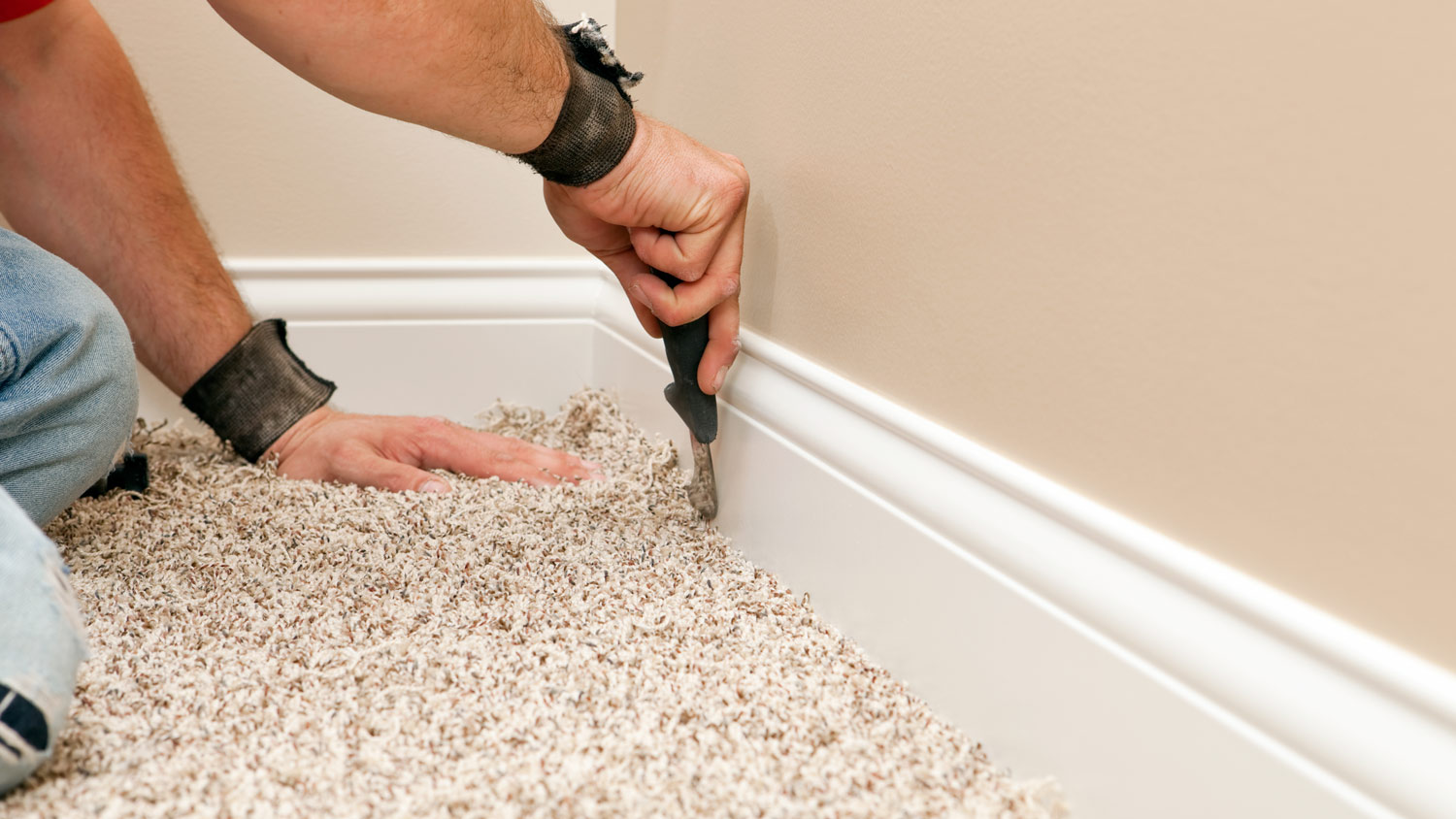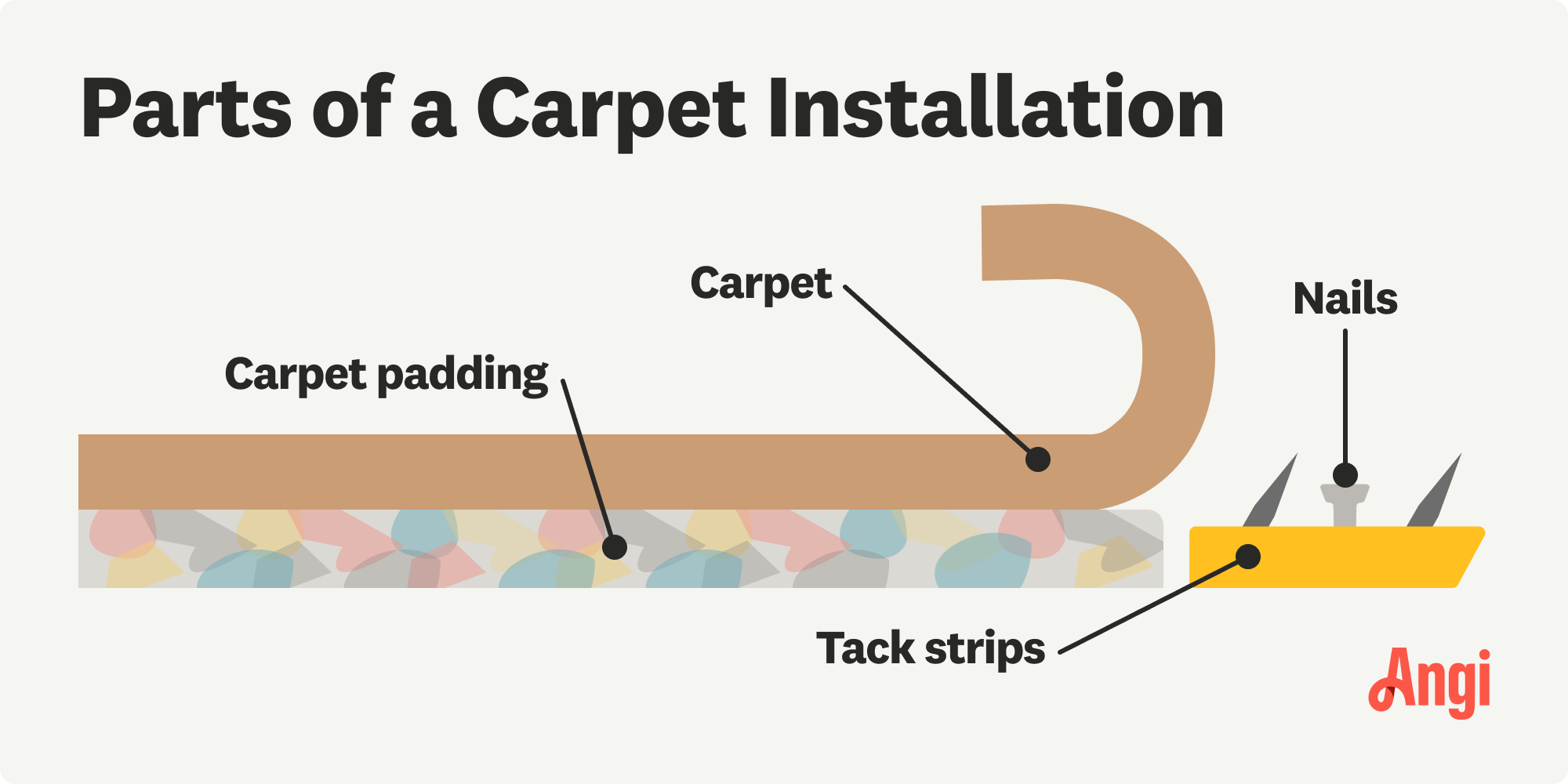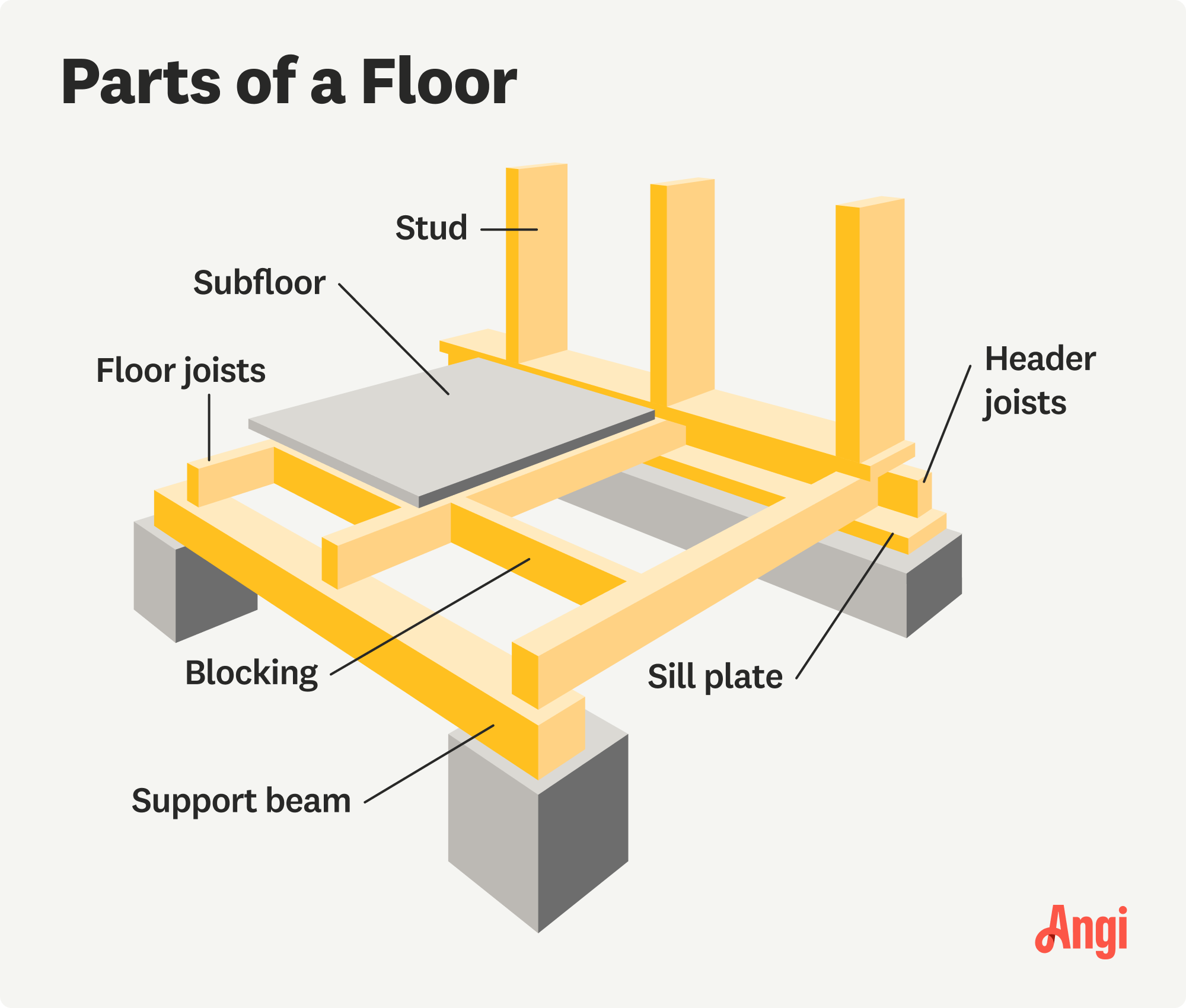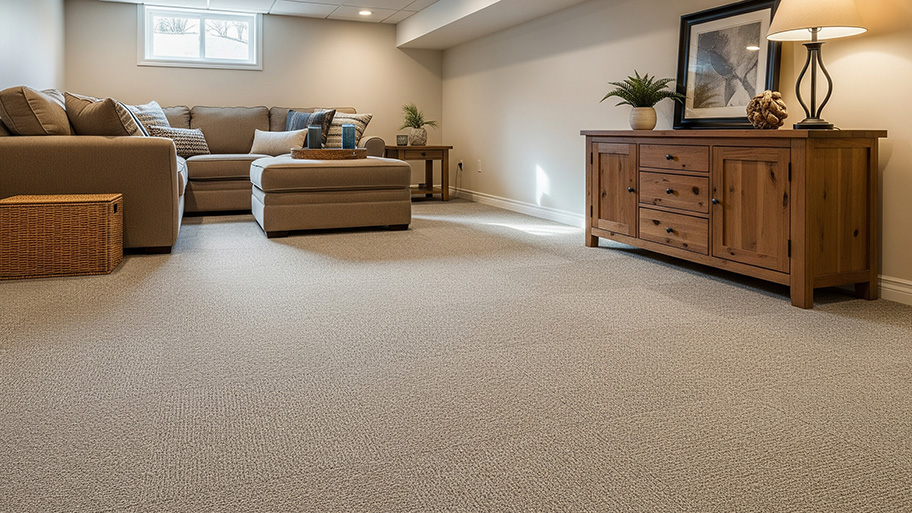
Get a clear estimate for carpet repair cost. Learn what impacts pricing, compare repair types, and find ways to save on your next carpet project.
The average cost to remove a carpet is $280, with a range of $120 to $720. A pro estimates the cost based on size, location, and installation—glue-down being more expensive to remove than stretch-in.


Contractors base carpet removal costs on square footage, home location, and installation type.
Many removal companies charge by project size, with rates of $0.50 to $5 per square foot.
Carpet disposal may be included in the initial quote, but it can sometimes incur an additional fee of $0.40 to $0.50 per square foot.
Staple-down and wall-to-wall carpet is the most cost-effective to remove, starting at $0.50 per square foot.
No matter how much you vacuum, shampoo, or try to cover it up with an area rug, your wall-to-wall carpet is no longer cutting it, and it needs to go. Carpet removal costs between $1 and $5 per square foot, or an average of $280, depending on whether the carpet is on the floor, stairs, or if padding layers are attached to the floor below. On the low end, removing carpet costs about $70, while the high end costs around $1,600. Let's take a look at carpet removal costs and the add-ons you can expect to pay.
Carpet removal companies either charge by the hour, square footage, or as a flat fee to handle the whole process from furniture removal to disposal. Always double-check your carpet removal estimate and confirm which parts of the process are in the quoted price.
Most contractors offer a carpet removal estimate based on the size of the room. Square-foot rates range as low as $0.50 to $5 per square foot for removal. On the lower end of the cost range, you can hire carpet removal professionals near you to remove simple wall-to-wall carpets and pads stapled to the ground in a flat, open room.
| Square Footage | Average Cost |
|---|---|
| 100 | $90–$200 |
| 200 | $180–$390 |
| 400 | $350–$770 |
| 800 | $700–$1,500 |
The price increases if the carpet is glued to the floor or in complicated areas, like steps, basements, attics, or old—potentially moldy—rooms.
Ripping up carpet in a 12-foot-by-12-foot living room takes far less time and energy than removing it from the stairs, bedrooms packed with furniture, or basements where the carpet may be attached to hard concrete. We'll break each location down below, but they account for the wide range of $0.50 to $5 per square foot for the job.

Let's cover more ground on the location and type of carpet removal costs. It's important to note that carpet installers attach it to the floor in several ways.
Traditional wall-to-wall carpeting is stretched and attached around the edges and in the center of the room with staples. However, glued carpet uses a strong adhesive to connect the carpet directly to the floor. Double-glued carpet includes both a path glued to the floor and carpet glued to the pad.
In either case, removing glued carpeting can be more time-consuming and require more specific tools. You’ll also find carpet in tricky spots, such as stairs or in basements, each of which has its own (often costly) removal challenges.
| Carpet Type | Average Cost per Square Foot |
|---|---|
| Stairs | $2–$20 per stair |
| Basement | $1–$1.50 |
| Staple-Down | $0.50–$1.50 |
| Glued | $3–$5 |
| Wall-to-Wall | $0.50–$5 |
Stair carpet: Stair carpet removal costs around $2–$20 per stair, as carpeting on stairs often requires removing padding that’s attached to both the riser and the tread of each step, increasing the difficulty of removal.
Basement carpet: Removing basement carpet costs about $1–$1.50 per square foot, but you might pay more in the long run due to moisture, dust, mold, and mold remediation prices, which can cost around $10–$25 per sq. ft.
Carpet and pad: Traditional staple-down installation will cost approximately $0.50–$1.50 per sq. ft. to remove and dispose of the carpet and then ripping up the pad underneath in small sections.
Glued carpet: Glued carpet will cost around $3–$5 per sq. ft. to remove because of the difficulty of the double glued-down installation.
Wall-to-wall carpet: Wall-to-wall carpet removal costs around $0.50–$5 per sq. ft., which can include either stapled or glued-down installations.

During the carpet removal process, the subfloor should be properly cleaned to ensure a seamless installation. This is particularly true if you’re removing glue-down or double glue-down carpet because the adhesive has to be removed. This is why glue-down carpet removal costs about $3 to $5 per square foot. Meanwhile, stretch-in carpet removal costs around $0.50 to $1.50 per square foot.
Since labor makes up nearly the entire cost of removing carpet, some companies will quote a per-hour rate of $60 per hour for the full job. The hourly estimate may include the cost to move furniture, remove the carpet, dispose of the old carpet, and even polish the floors. On average, removing carpet takes between two and four hours for a 12-foot-by-12-foot room, and longer for steps or larger spaces.
Carpet removal professionals may include the cost of carpet disposal and recycling materials in their initial quote. Some will even advertise that they’ll take care of the full process for you without additional charge.
If you've already removed the carpet on your own or have a pile of torn-up carpet from a larger project, you'll pay between $0.40 and $0.50 per square foot for disposal alone. You can also hire a local junk remover for a flat fee of $75 to $150 to haul it away. When you’re doing a major remodeling job, you might have enough old carpet—and other debris like tile, flooring, and cabinets—to warrant renting a dumpster to dispose of it all. You’ll do more heavy lifting than if you hire a hauler, but you’ll trade that off for the luxury of moving at your own pace, usually a full week before they take the dumpster away.
If you're trying to trim off your carpet disposal costs or find a new life for your carpet, check with local charities and buy-nothing groups to find a new home for carpet that's still in decent shape.
Removing carpet from a room often translates to a larger project. Plus, you’ll need to move furniture out of the way, which can be tricky. You may also discover that your floor's substrate needs some TLC before installing new flooring.
While some carpet removal companies include the price of moving furniture in their estimate, they may also charge around $0.20 to $0.25 per square foot of furniture, or about $60 per hour.
There are local carpet recovery programs offering methods of recycling this common home item. In addition to the charge of hauling if you don't do it yourself, a recycling center will often charge between $0.05 and $0.25 per square foot to recycle it.
Whether your home is flooded or has mold and mildew issues, wet carpet should be removed right away. This costs around $1.20 to $1.55 per square foot. Additionally, you’ll likely need to account for more services, including mold removal, which is about $10 to $25 per square foot, and basement waterproofing, which costs about $5 to $10 per square foot.

You're bound to find a few surprises below your wall-to-wall carpets, especially if the previous owner installed them. The cost to repair flooring runs quite the gamut depending on materials, the type of damage, and whether the floor is salvageable. Overall, assume that you'll pay anywhere from $2 to $30 per square foot for floor repairs.
| Repair Type | Average Cost |
|---|---|
| Subfloor repair | $2–$10 |
| Subfloor replacement | $3–$10 |
| Trim replacement | $5.70–$9 |
| Floor joist repair | $10–$67 |
It's a common dream to swap out old carpet for cleaner, more durable flooring.
The cost to install wood flooring, for example, ranges from $6 to $12 per square foot, not including the cost to remove the carpet. Other popular materials and their price tags include the following:
Cost to install laminate flooring: $3–$8 per sq. ft.
Cost to install vinyl flooring: $2–$7 per sq. ft.
Cost to install ceramic tile flooring: $3–$5 per sq. ft.
Cost to install porcelain tile flooring: $13–$65 per sq. ft.
Cost to install new carpeting: $3–$11 per sq. ft.
High-traffic areas require flooring that can withstand frequent use, children’s shoes, scurrying paws, and dirt or stains. Installing an easy-to-clean floor that will last on stairs, hallways, or in the kitchen may be worth the long-term investment.
Here are some signs you need to remove your carpet. Keep in mind that besides all the signs below, you should consider the age of your carpet. If it’s been over 10 years since you last installed new carpet, now is the time to get it done. Besides that, look around and see if you notice the following:
Stubborn stains
Heavy wear and tear
Bad-smelling carpet
Worsened allergies
In addition, if your carpet has water damage, you should replace the carpet and underlayment as soon as possible. This will help prevent mold and mildew growth in your flooring, which can easily spread to other areas of your home.
Carpet repair costs around $200, while the average carpet replacement cost is $1,780. You make big savings by repairing a carpet in good condition rather than removing and replacing it. Burn holes, tears, or damage on a particular patch of piling can all be mended to leave your carpet looking as good as new.
However, replacement is a better long-term investment if your carpet is old, worn, and ingrained with tough-to-remove stains and smells. Removal might also be necessary when you have a carpet with severe water damage or one that’s old-fashioned and clashes with a planned room makeover.
Without a doubt, removing carpet yourself is the best way to cut several hundred dollars off your bill. If that route isn’t worth the hassle, here are some other tips to keep in mind:
Move the furniture yourself before the carpet removal company arrives.
Offer to haul and recycle the carpet yourself.
Book your removal contractor at the same time as your new flooring installation.
Choose a less popular time for the appointment, such as the midweek.
Speak with at least three carpet remover contractors to compare quotes.
If you're removing carpet from a standard 12-foot-by-12-foot room, a professional carpet removal team will cost between $140 and $430. Removing carpet yourself can cost as little as $25 for tools.
Keep in mind that you may encounter padding underneath, and removing old carpet padding without damaging the floor is a skill in and of itself. Call a local carpet removal team if you’re in doubt about tearing it up yourself.
Removing carpet requires strength, expertise, and specialized equipment. Here’s why it’s best to leave the job to a pro:
Professionals know how to remove carpet, padding, and tack strips without damaging your floors.
Experienced pros know how to spot issues like mold, pet odors, and rot.
DIY carpet removal can lead to injuries, floor damage, and costly repairs.
Pros know how to safely dispose of old carpet and padding in accordance with local regulations.
Carpet removal pros can complete the job quickly, saving you time and stress.
If you want to help out your pro, consider taking on the following tasks:
Clear furniture, decor, and belongings from the room before your pro arrives
Vacuum the carpet to clean up dust and dirt
Clear a pathway to the room so your pro has easy access
Assist with clean-up after the project is complete
Dispose of the carpet in accordance with local regulations
Discuss with your pro which type of carpet you have installed, such as glued, staple-down, or wall-to-wall.
Provide your pro with the room's measurements and whether padding or tack strips are included.
Talk with your pro about whether they handle recycling and disposal, and ask about any additional fees.
Confirm the pricing, disposal process, and timeline with your pro so you know exactly what to expect.
Home is the most important place on earth, which is why Angi has helped more than 150 million homeowners transform their houses into homes they adore. To help homeowners with their next project, Angi provides readers with the most accurate cost data and upholds strict editorial standards. We extensively research project costs to develop the pricing data you see, so you can make the best decisions for you and your home. We rely on reputable sources, including the U.S. Bureau of Labor Statistics, academic journals, market studies, and interviews with industry experts—all to ensure our prices reflect real-world projects.
Want to help us improve our cost data? Send us a recent project quote to [email protected]. Quotes and personal information will not be shared publicly.
From average costs to expert advice, get all the answers you need to get your job done.

Get a clear estimate for carpet repair cost. Learn what impacts pricing, compare repair types, and find ways to save on your next carpet project.

Carpet padding makes your carpet feel extra comfortable and protects your floors from damage, but how much does carpet padding cost? Let’s look at the numbers.

Not only are carpet tiles easier to install than carpet, but they’re often more affordable. So, how much does carpet tile installation cost? Let’s take a look.

The best carpet for stairs is durable and suited for high-traffic environments. However, they aren’t as soft and can be more expensive. Read on to learn more.

If you’re looking to cover unsightly stains in your home, dye is an alternative to replacing the carpets entirely. Here’s how to dye carpet from start to finish.

If your carpet has seen better days, it might be time to give it some TLC. These questions to ask your carpet installer will help you prepare for the project.